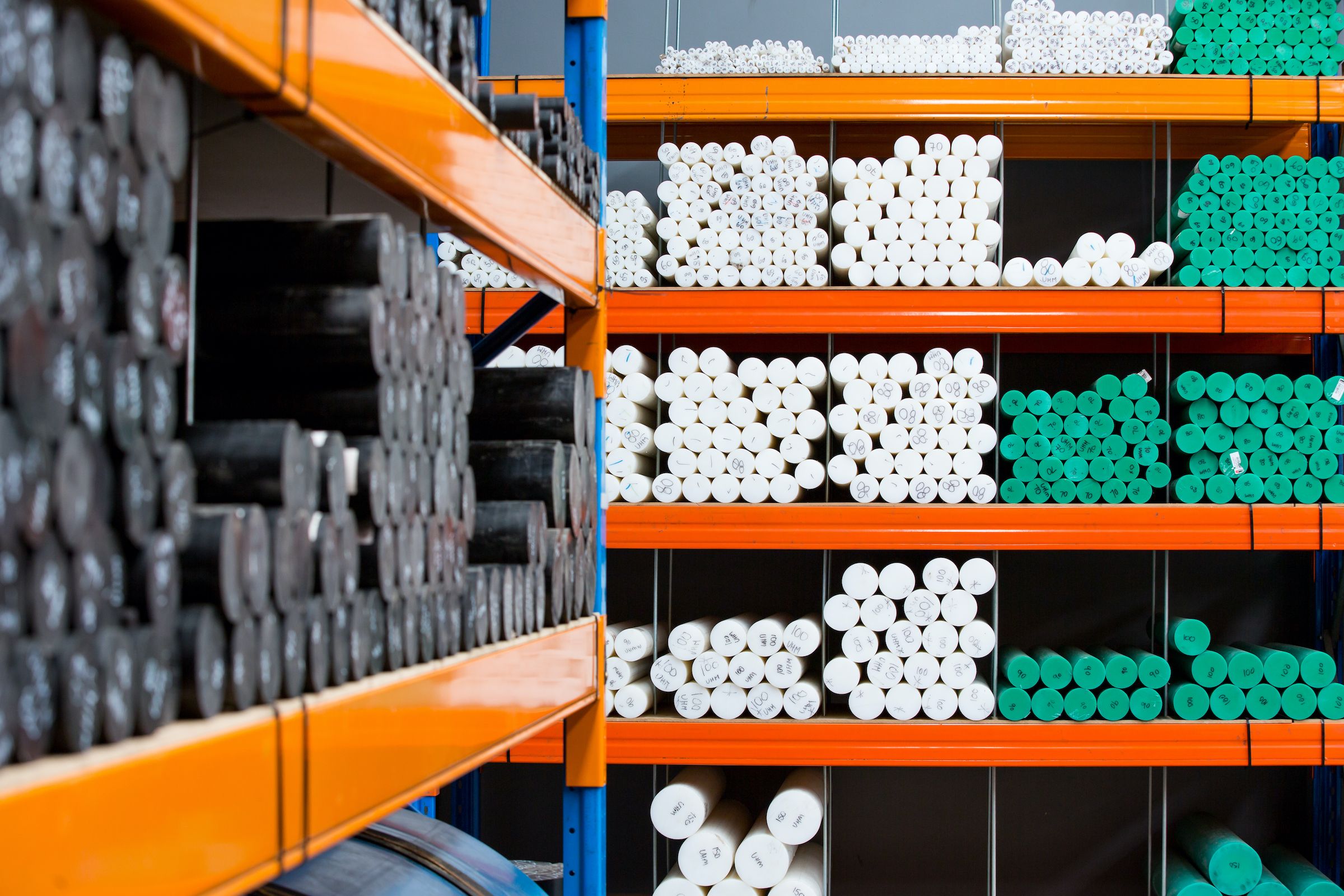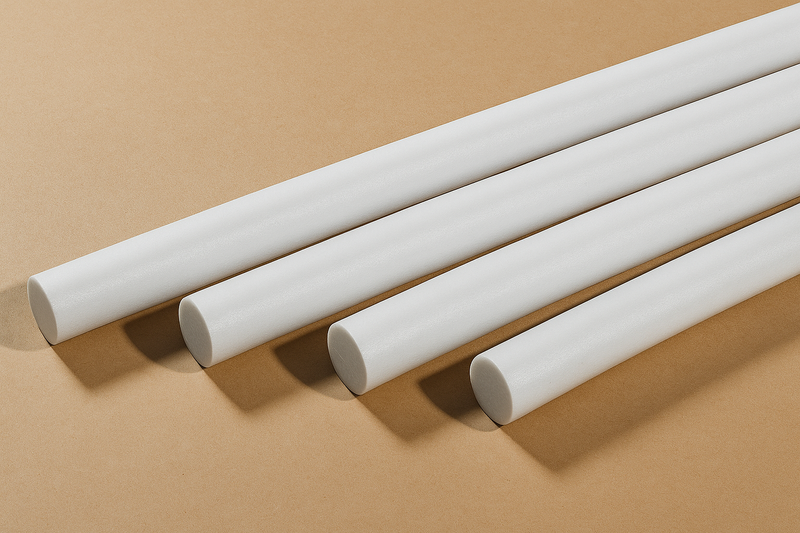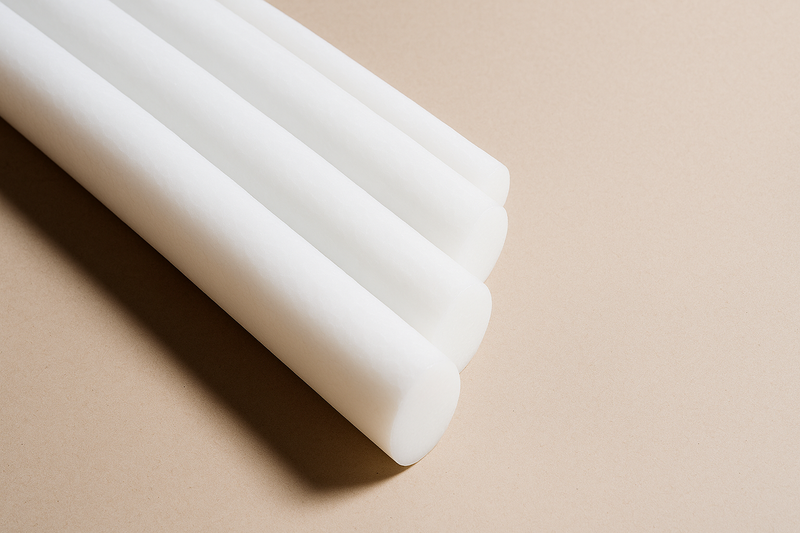At a glance
- Acetal (POM),stands out as a leading engineering plastic, prized for its high stiffness, dimensional stability, and low friction.
- Engineering Plastics Online Pty Ltd (ePol) is at the forefront of Australia's engineering plastic procurement, committed to meeting the evolving needs of the manufacturing industry.
- Commodity plastics find widespread use in mass-produced single-use items, while engineering plastics are designed to withstand mechanical and environmental conditions beyond the capabilities of commodity plastics.
Selecting the right engineering plastic is crucial for the success of any manufacturing project. Acetal, also known as POM Acetal, has emerged as a prominent player in the realm of engineering plastics, renowned for its exceptional properties and versatility.
In this comprehensive comparison, we will delve into the strengths and weaknesses of Acetal engineering plastics and compare them with other commonly used engineering plastics. By understanding these nuances, you can make an informed choice that aligns perfectly with your application needs.
Why invest in Engineering Plastics?
Benefits of Engineering Plastics
Engineering plastics offer numerous advantages over standard and high-temperature plastics:
- Enhanced Mechanical Strength and Thermal Resistance: Engineering plastics exhibit superior mechanical strength and thermal resistance, expanding their usability in demanding applications.
- Excellent Chemical and Wear Resistance: These plastics can withstand harsh chemical environments and resist wear over extended periods, ensuring long-lasting performance.
- Machinability and Dimensional Stability: Engineering plastics are easily machined into complex geometries with tight tolerances, guaranteeing precise fit and performance in intricate parts.
- Fire Retardancy: Many engineering plastics possess inherent fire retardant properties, making them suitable for safety-critical applications.
- Diverse Applications: Engineering plastics find extensive use in automotive, electronics, construction, sporting goods, consumer goods, and industrial sectors.
Common Uses of Engineering Plastics:
Engineering plastics have become indispensable across various industries, contributing to advancements and innovations. Some typical applications include:
- Automotive Industry: Car bumpers, dashboard trims, and motorcycle helmets.
- Electrical and Electronics: Connectors, insulators, and casings for electronic devices.
- Building and Construction: Pulleys, architectural components, and weather-resistant materials.
- Sporting Goods: Skis, protective gear, and equipment components.
- Consumer Goods: LEGO pieces, utensils, and household items.
- Industrial Applications: Corrosion-resistant liners, machine parts, and precision components.
Exploring Acetal (POM) Engineering Plastics
Acetal (POM), stands as a prominent engineering plastic due to its unique properties, including high stiffness, dimensional stability, and low friction. Widely used in precision parts and components, Acetal finds application in bearings, bushings, gears, food processing equipment, and electrical components. One of the most important properties of Acetal is its excellent wear resistance and there are more reasons why Acetal is the best plastic for your business.
ePol's , renowned plastic manufacturers’ next-generation online procurement system offers customers direct access to competitive pricing, live inventory, and comprehensive logistics, empowering businesses to stay competitive and agile without historical bottlenecks.
Understanding POM-C and POM-H
Acetal engineering plastics come in two main variants: Copolymer Acetal (POM-C) and Homopolymer Acetal (POM-H). Each variant possesses distinct advantages and is chosen based on specific requirements.
Similarities
Both POM-C and POM-H are variants of Acetal engineering plastics, sharing many of the exceptional properties that make Acetal a popular choice in various industries.
Differences
POM-C offers superior dimensional stability due to its lower crystallinity level than POM-H.
POM-C also exhibits enhanced resistance to hot water, strong caustics, or high pH solutions, making it particularly suitable for applications in harsh environments.
On the other hand, POM-H provides greater stiffness with a higher flexural modulus at room and elevated temperatures, making it a preferred choice for applications requiring high strength and stiffness. It also boasts somewhat higher tensile and impact strength at room temperatures and is slightly harder, resulting in a lower coefficient of friction.
Performance Characteristics and Sustainability
Acetal engineering plastics boast outstanding flexural and tensile strength (up to 9,500 psi), and excellent hardness and dimensional stability. Moreover, Acetal exhibits low moisture sensitivity in wet environments and resists a wide range of chemicals, including many solvents. Acetal can be reground and recycled as an eco-friendly choice, contributing to sustainable manufacturing practices.
Commodity Plastics vs. Engineering Plastics
Commodity Plastics
Commodity plastics are widely used in the mass production of single-use items, including packaging films, bottles, bags, cutlery, and children's toys. The choice of commodity plastics is primarily driven by their cost-effectiveness and mechanical properties, which align with applications where specific mechanical demands are not critical.
Common examples of commodity plastics include:
Acrylonitrile Butadiene Styrene (ABS) is frequently utilised in electronic casings and toys.
Ethylene-vinyl Acetate (EVA), is favoured for buoyancy aids and flip-flop soles.
High-Density Polyethylene (HDPE) is extensively used in fuel tanks and water pipes.
Engineering Plastics
In contrast, engineering plastics are designed to withstand mechanical and environmental conditions beyond the capabilities of commodity plastics. These plastics boast superior characteristics, including high mechanical strength, heat resistance, chemical stability, and self-lubrication, making them invaluable in diverse industries. While engineering plastics are not mass-produced to the same extent as commodity plastics, they play a pivotal role in applications where specific mechanical properties are critical.
Examples of engineering plastics include Polyamide (Nylon), lauded for its versatility; Polybutylene Terephthalate (PBT), prized for its high strength and dimensional stability; and Polyetheretherketone (PEEK), used in demanding applications for its exceptional properties.
Comparison with Other Commonly Used Engineering Plastics:
Acetal (POM) vs. Nylon
Similarities:
Both Acetal and Nylon demonstrate high strength and wear resistance, rendering them suitable for demanding applications in various industries.
Differences:
- Acetal outperforms Nylon in terms of low friction properties, particularly in wet or moist environments, making it an excellent choice for applications requiring smooth movement and reduced wear.
- Conversely, Nylon excels in impact resistance and displays higher tensile strength at room temperatures, making it ideal for applications subjected to sudden loads or impacts.
Acetal (POM) vs. Polyethylene (PE)
Similarities:
Both Acetal and Polyethylene are widely used engineering plastics, catering to diverse applications across various industries.
Differences:
- Acetal offers better dimensional stability due to its lower level of crystallinity, making it particularly suitable for precision parts that demand tight tolerances.
- Additionally, Acetal exhibits greater stiffness and flexural modulus at both room and elevated temperatures, ensuring optimal performance in various demanding applications.
- Polyethylene, known for its excellent chemical resistance, finds application in scenarios where chemical compatibility is a crucial consideration.
- Furthermore, Polyethylene tends to be more cost-effective than Acetal, which can be a decisive factor in certain projects.
Selecting the right engineering plastic is a critical decision that significantly impacts the success and performance of manufacturing projects. At ePol, our dedication to offering top-quality engineering plastics, including the versatile Acetal (POM) and other high-performance variants, ensures that our customers gain a competitive edge in their respective industries.
As leaders in the Australian engineering plastics procurement, we remain committed to providing industry professionals with the necessary resources to make informed choices for their specific application needs.
Whether it's commodity plastics catering to mass-produced items or engineering plastics fulfilling unique mechanical demands, ePol is here to support your business goals with the finest materials and unmatched expertise.








